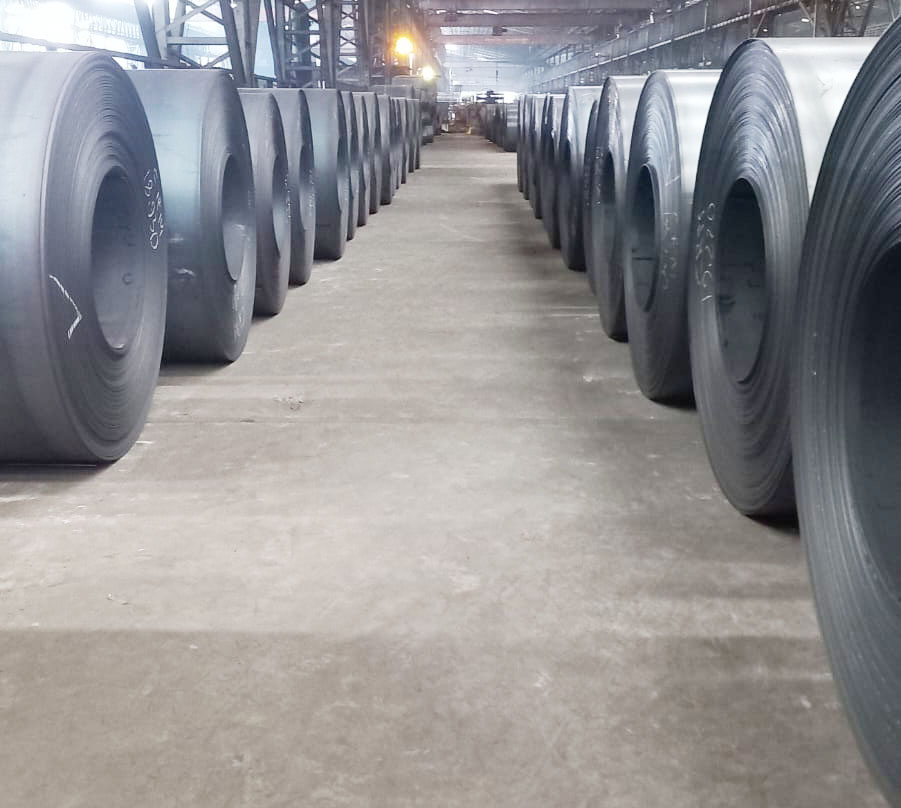Steel can be acquired in a wide range of grades, standards, forms, and finishes; the World Steel Association lists over 3,500 different classes of steel, each with its own set of properties. Steel’s different varieties allow it to be widely employed in infrastructure, appliances, vehicles, wind turbines, and a variety of other uses.
However, optimizing the characteristics of steel for particular application goes beyond modifying the chemical makeup. Even when the grades and standards are the same, steel production processing can have a considerable impact on steel products. The distinction between hot rolled and cold rolled steel is an important differential among pre-fabricated steel products.
What’s the difference between hot rolled and cold rolled steel?
It is vital to highlight that the primary distinction between hot and cold rolled steel is one of process. The term “hot rolling” refers to heat-based processing. The term “cold rolling” refers to procedures that are performed at or near room temperature. Although these procedures have an impact on overall performance and application, they should not be mistaken with formal steel specifications and grades, which are concerned with metallurgical composition and performance ratings. Steels of various grades and specifications, including basic carbon steels and other alloy steels, can be hot rolled or cold rolled.
Although it may appear obvious, various varieties of steel are better suited for specific uses. Knowing which to utilize will help you save money on raw resources. It might also save you time and money on further processing. Understanding the distinctions between hot and cold steel is critical when deciding which to use.
Hot rolled steel
Hot rolled steel is steel that has been roll-pressed at extremely high temperatures—over 1,700 degrees Fahrenheit, which is higher than the re-crystallization temperature for most steels. This makes the steel easier to shape, resulting in easier-to-work-with items.
To produce hot rolled steel, manufacturers begin with a huge, rectangular length of metal known as a billet. The billet is heated before being shipped to pre-processing to be flattened into a big roll. It is then held at a high temperature and passed through a series of rollers to acquire its final size. White-hot steel strands are forced through the rollers at tremendous speeds. Rolled steel is spun into coils and allowed to cool before being used to make sheet metal. Materials are sectioned and packaged for other forms, such as bars or plates.
Steel shrinks slightly when it cools. Hot rolled steel has less control over its final shape because it is cooled after processing, making it less appropriate for precise applications. Hot rolled steel is frequently utilized in applications where precise dimensions are not required. Hot rolled steel is frequently used in railroad tracks and construction projects.
Hot rolled steel is often differentiated by the following characteristics:
- A scaled surface—the result of extreme temperature cooling
- For bar and plate items, the edges and corners are slightly softened (due to shrinkage and less exact finishing).
- Cooling may cause small distortions, resulting in somewhat trapezoidal shapes rather than exactly squared angles.
What are the advantages of hot-rolled steel?
Hot rolled steel typically requires far less processing than cold rolled steel, making it far less expensive. Because hot rolled steel is allowed to cool at room temperature, it is basically normalized, which means it is devoid of internal tensions caused by quenching or work-hardening operations.
Hot rolled steel is appropriate for applications where dimensional tolerances are less critical than total material strength and surface quality is not a major concern. When it comes to surface finish, scaling can be removed by grinding, sand blasting, or acid-bath pickling. After the scale has been removed, several brush or mirror finishes can be added. Descaled steel is also more suitable for painting and other surface treatments.
Cold rolled steel
Cold rolled steel is essentially hot rolled steel that has been processed further. After cooling, hot rolled steel is re-rolled at room temperature to get more precise dimensions and improved surface qualities.
Cold “rolled” steel is frequently used to describe a variety of finishing procedures, but technically, “cold rolled” refers exclusively to sheets that are compressed between rollers. Steel forms, such as bars or tubes, are “drawn,” rather than rolled. Other cold finishing methods include turning, grinding, and polishing, all of which are used to refine existing hot rolled stock.
Cold rolled steel can often be identified by the following characteristics:
Better, more finished surfaces with closer tolerances
Smooth surfaces, that are often oily to the touch
Bars are true and square, and often have well-defined edges and corners
Tubes have better concentric uniformity and straightness
What are the advantages of cold rolled steel?
With better surface properties than hot rolled steel, it’s no surprise that cold rolled steel is frequently employed for more technically accurate applications or where aesthetics are vital. However, due to the additional processing required for cold finished products, they are more expensive.
Cold rolled steels are often harder and stronger than normal hot rolled steels in terms of physical properties. Work hardening increases the hardness, resistance to tension breaking, and resistance to deformation of steel as it is formed at lower temperatures.
However, these additional treatments can cause internal tension within the material. If the steel is not stress alleviated prior to cutting, grinding, or welding, this can result in unanticipated warping.
Product development and manufacturing
Depending on what you’re looking to build, different materials each have their own benefits and drawbacks. Steel materials may supply the building blocks for any structural design imaginable, whether for routine projects or one-off manufacturing.
Source:


